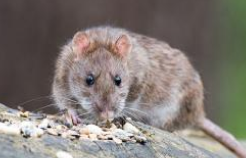Carpenter Bees
Learn More About Carpenter Bees
Often mistaken for bumblebees, carpenter bees are commonly found in spring and early summer, buzzing around eaves and around wooden porch railings. Getting their name from their habit of boring holes into wood to create nests for reproduction, carpenter bees are known to cause substantial damage to untreated wood, especially if the insects go unchecked for long periods of time.
When most people think of bees, only a handful come to mind like bumblebees and honey bees. But all these bees are actually part of a much bigger order of insects collectively known as Hymenoptera. Believe it or not, the Hymenopteraorder contains over 150,000 living species! The ones that you should be concerned about as a Seattle area homeowner are within the groups Parasitica and Aculeata.
If a nest of stinging insects has your family worried, our pest management professionals can work to treat it quickly. Our technicians train to take care of this process with methods that are safe for your family and the environment. This can include low-impact green pest control if necessary. For bees, activity in the nest will typically subside within 24 hours. However, we ask that you allow 3-5 days for complete control. After five days have passed, the nest can be removed if desired. With that said, removing the physical nest is not necessary, as wasps and hornets will not recolonize it later. This is important to know since some nests, such as those found in wall voids, cannot be retrieved.
Contact us today for expert bee control services!
| Pest Identification: | |
|---|---|
| Size | Up to 1 in. |
| Color | Mostly black with some yellow markings; males have a white dot on their heads. |
| Body Structure | The wings of the carpenter bee are attached to the thorax. Carpenter bees have three pairs of legs. The head contains the mouth part and antennae. Carpenter bees use their mandibles, which is part of their mouth part, to chew through wood for their nests and change pollen into nectar. |
| Characteristics | The life cycle of the carpenter bee is fairly brief, with eggs hatching a few days after being lain and reaching full maturity within 5-7 weeks. Females deposit a ball of pollen near their eggs, providing a source of nourishment for the offspring. Unlike some other bees, carpenter bees are not social insects. |
| Habitat & Behavior | Bees are beneficial insects but can possibly be dangerous when they nest near your home. Bee stings are painful and life-threatening when the victim is allergic. Because treatment strategies differ for bee and wasp infestations, proper identification is critical to success. Note: Eastside Exterminators does not treat for honey bees. Instead, we contact a local beekeeper to remove the queen and as much of the colony as possible. |
| Commonly Active | Spring / Summer |
| Prevention & Treatment | Carpenter bees can cause repeat damage if left untreated. Additionally, other problematic and destructive pests, like carpenter ants, can invade holes bored by carpenter bees, causing additional structural harm. It often is difficult to discern carpenter bees from bumblebees. If you believe carpenter bees have invaded your home, you should contact a pest control professional to positively identify the species and treat for the insects accordingly. |

 (425) 318-7912
(425) 318-7912
 MY ACCOUNT
MY ACCOUNT
 425-318-7912
425-318-7912







